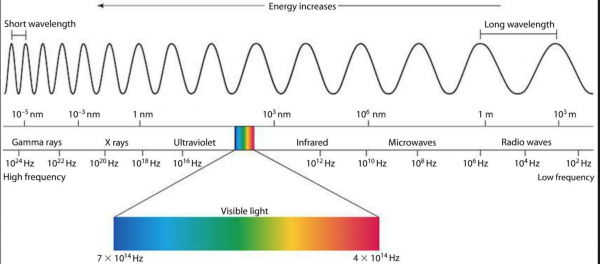Light lab
Greetings,
- The light lab is one of my favorite labs to do...mainly because i start the lab off with a series of neat demonstrations about light. Why are we talking about light? As noted in this mornings lecture material, classical mechanics (physics) does an awesome job of explaining many of the day to day observations related to things (solid objects) moving around in our world...including planets. A second, and separate field of physics deals with light or electromagnetic (EM) radiation.
- - classical mechanics (CM) treats objects as particles (solid objects). From CM we get mass, position, speed, acceleration, momentum, gravity, etc.
- - optics treats "light" as waves. From optics we get wavelength (λ), frequency (ν), and speed of light (c)...diffraction, prisms, etc.
When CM tried to explain atoms and molecules as "particles" like baseballs, it did not do a very good job. I made an analogy in this morning's lecture notes about screwdrivers...consider re-reading if you missed it. It turns out that in order to explain electrons we do not describe them as particles (yes they can behave like particles sometimes) but we describe them as waves. Yes, this is a bit confusing, but welcome to the quantum world!
So for this reason we start our exploration of the structure of an atom with the study of light and wave properties.
A figure similar to the above is shown in your text in Figure 7.4.
As discussed this morning, the following relationship exists: ν = c/λ
Example 1
Please get out your notebook or lab notebook and work the following problems.
